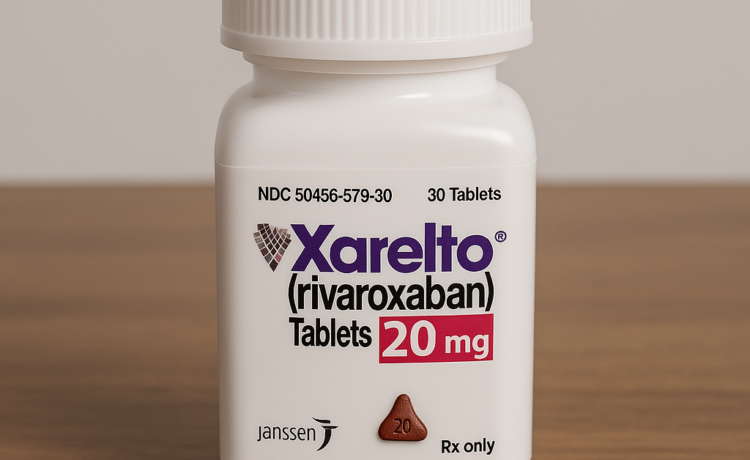Last Updated on May 28, 2025
Blood clots can be life-threatening. For many people, blood thinners are an important part of staying healthy and preventing serious complications. Whether you’ve just been prescribed a blood thinner or you’re trying to understand a loved one’s treatment, this article explains what blood thinners are, why doctors prescribe them, and how they work. You’ll also learn about common conditions like deep vein thrombosis (DVT), pulmonary embolism (PE), and atrial fibrillation (AFib), along with what to expect while taking these medications.
By the end, you’ll have a clear understanding of how blood thinners help reduce health risks and how to manage them safely.
Who needs blood thinners?
Blood thinners, or anticoagulants, are prescribed for the following reasons (this list is not exhaustive):
- To treat blood clots in the leg veins (“DVT” or deep venous thromboses) or blood vessels in the lungs (“PE” or pulmonary embolism). These clots may develop due to inherited clotting conditions or as a result of prolonged immobility, such as after a major accident or orthopedic surgery.
- To prevent DVT or PE in high-risk situations. For example, someone undergoing major orthopedic surgery, such as a hip replacement, may be prescirbed a blood thinner to prevent clot formation during recovery.
- To reduce the risk of stroke in certain individuals with atrial fibrillation – more on atrial fibrillation below.
What are the different types of blood thinners?
Injectable blood thinners are often administered in the hospital, usually by injecting them under the skin, to prevent blood clots such as DVT. Hospitalized patients are typically less mobile, which increases the risk of developing DVT, regardless of why they were admitted.
The majority of people on long-term blood thinners are prescribed the following oral medications (listed in chronological order of U.S. FDA approval):
- Coumadin (generic name warfarin) is inexpensive and has been in use for decades. One major drawback is the need for regular blood testing – either through lab draws or a home finger-prick device – to monitor the blood-thinning effect. The risk of bleeding increases if the effect exceeds a narrow safe range. There are also some dietary restrictions. Warfarin is still used in specific situations, such as in people who have had mechanical heart valve surgery.
- Pradaxa (dabigatran) was the first blood thinner pill to come along (around 2010) which doesn’t need frequent blood monitoring, unlike warfarin. Generic dabigatran is available in the U.S.
- Xarelto (rivaroxaban)
- Eliquis (apixaban)
- Savaysa (edoxaban)
Generic rivaroxaban and apixaban are expected to be available within the next year.
Other medications, like aspirin or Plavix (clopidogrel), also thin the blood but work by affecting platelets (cells in the blood that help with clotting). They are prescribed for individuals who have had a heart attack, stroke, a stent for a blocked artery in the body, or poor circulation in the legs (peripheral arterial disease). These medicines will not be discussed further in this blog.
How long do people need blood thinners for?
Many individuals are prescribed blood thinners for a few months after the first diagnosis of DVT or PE. Individuals taking preventative blood thinner for surgery typically need it for a few weeks after surgery, or until activity returns to near-normal.
Individuals who experience a second blood clot – which can happen months to years after the first event – may be advised to stay on blood thinner indefinitely.
Individuals who take blood thinners for atrial fibrillation are typically advised to stay on the medication long-term (more on “a fib” below).
What to expect while on blood thinners
Twice a day medications (such as Eliquis) are best taken spread out 10-12 hours, some people find it easier to set an alarm to remind them. The main side effect of being on a blood thinner is the increased risk of bruising, or bleeding with menstruation or injury.
Women may need to consult their healthcare provider to see if iron supplementation is needed for heavy menses while on blood thinner. Individuals engaging in contact or high-risk sports should confer with their provider regarding activity restrictions.
If a medical procedure is needed (such as colonoscopy, some type of biopsy, or elective surgery), the provider doing the procedure will give instructions as to whether/when to stop taking the blood thinner pill in advance.
What is atrial fibrillation?
Atrial fibrillation occurs when the upper two “chambers” of the heart (called the “atria”) do not move in a synchronized fashion with the lower two chambers of the heart (called the ventricles). Many people do not realize they have atrial fibrillation until the heart rate is checked in a clinic as part of a checkup.
Atrial fibrillation is more common as people get older (after age 65), or have predisposing conditions such as diabetes, high blood pressure, obesity, smoking, heavy alcohol use, or heart disease. It is estimated that 10 million people in the U.S. have atrial fibrillation. While some people with a fib don’t feel it, others may experience palpitations, shortness of breath, dizziness or chest pain.
Depending on the associated conditions, atrial fibrillation may increase the risk of stroke. A subset of individuals with atrial fibrillation will be recommended to take blood thinner medication to reduce the stroke risk: a hypothetical example would be a 75 year old man with high blood pressure, diabetes and a fib. In contrast, a 60 year old man who is physically fit, and does not have diabetes or high blood pressure, will typically not need to take blood thinner medication for a fib.
Final Thoughts
Blood thinners are widely used to treat and prevent serious conditions caused by blood clots. Whether prescribed for a short period after surgery or taken long-term for conditions like atrial fibrillation, these medications have been shown to be effective, safe, and convenient for most people.
Although they may require a few adjustments to your daily routine, blood thinners can greatly reduce the risk of complications such as stroke or pulmonary embolism. Your healthcare provider will help you choose the right medication and ensure you’re taking it properly.
Always follow your provider’s instructions, ask questions when needed, and stay informed about your treatment. Understanding how blood thinners work is an important step in managing your health with confidence.





